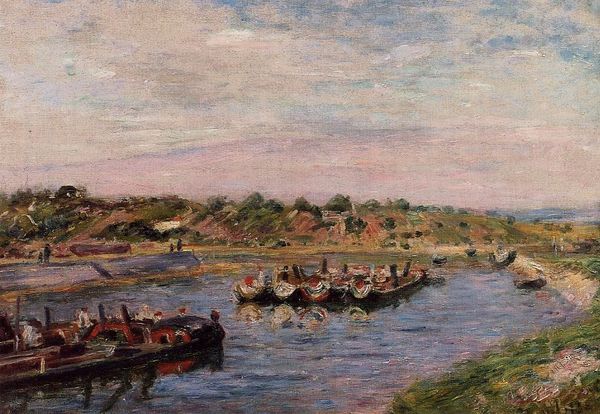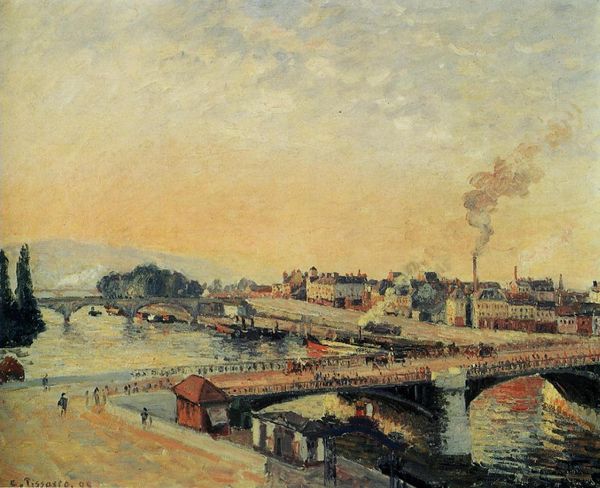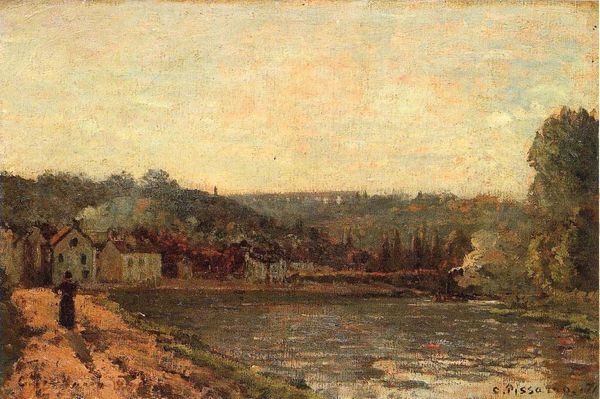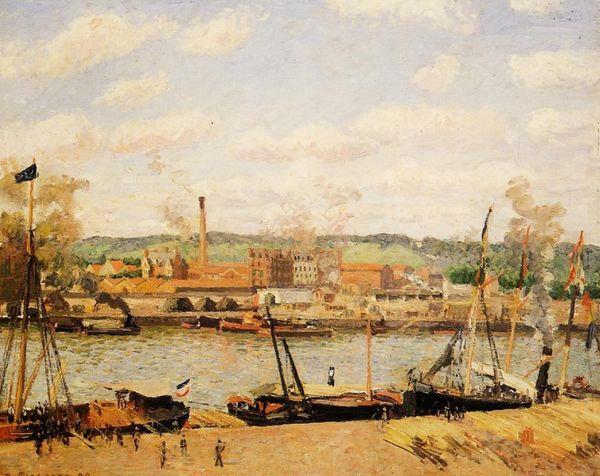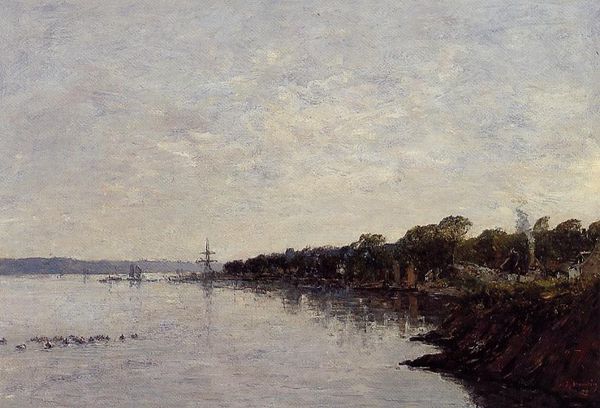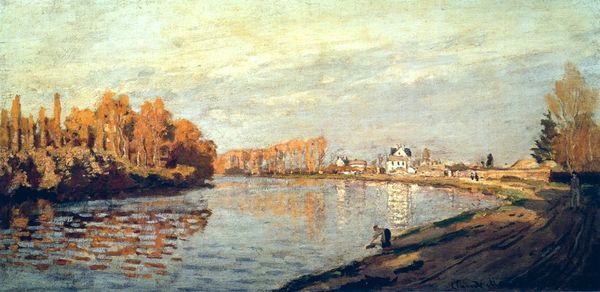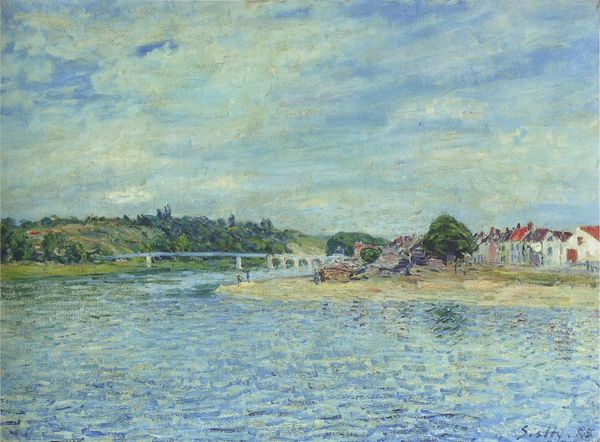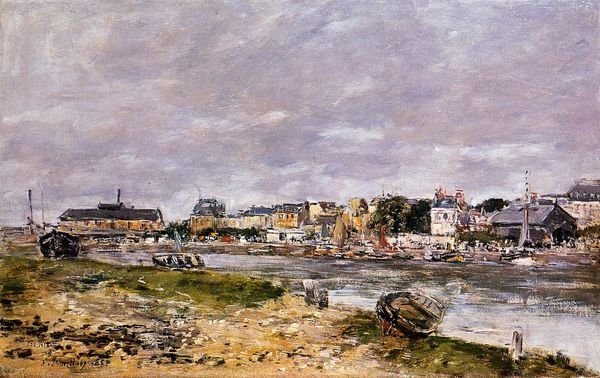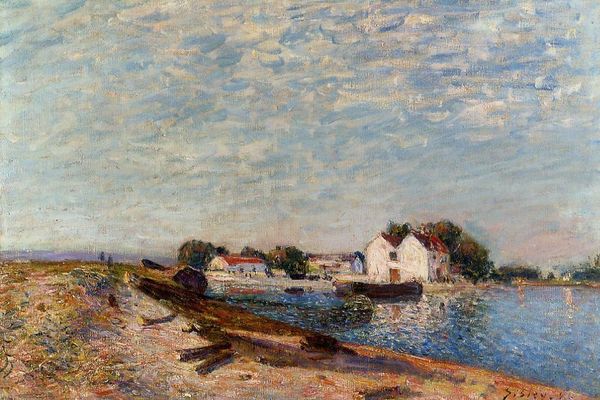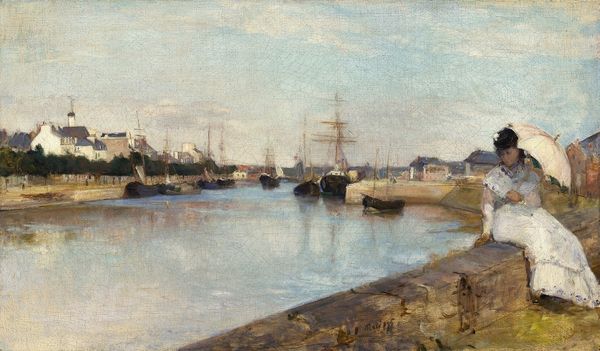
Copyright: Public domain
Editor: This is Eugène Boudin's "Entrance to the Port of Saint-Valery-sur-Somme," painted in 1891 using oil paints. The muted colors give it a melancholic feel. It makes me think about transitions, both geographically and emotionally. What stands out to you as you look at this piece? Curator: The pervasive atmosphere definitely resonates. Consider the symbolism inherent in the location itself: a port represents departure and arrival, constant flux. Beyond the mere depiction of ships and water, it taps into the deep-seated human experience of journeys and homecomings. Notice the positioning of the vessels - how do they contribute to your sense of “transition?" Editor: I see some boats moving toward the sea and some are docked – it does capture a kind of back-and-forth. Are there other symbols here that contribute to the experience? Curator: Indeed. Water, universally, is a powerful symbol. What does it represent to you? Here, its stillness and reflective quality perhaps echo the internal contemplation often associated with significant life changes. It's not turbulent or overwhelming, but rather still, as if waiting. And consider the sky – the soft, diffused light softens harsh edges. This gentle embrace suggests a sense of acceptance, or at least quiet anticipation, rather than dramatic upheaval. Editor: So it's less about dramatic change and more about the quiet, constant flow of life, mirrored in these maritime comings and goings. That is fascinating, it shifts how I perceived the emotional tone of the artwork completely. Curator: Precisely. It reveals that art often speaks to the unspoken undercurrents of our shared human experience. Hopefully, it highlights how a deeper understanding of symbology enriches appreciation. Editor: Absolutely. Seeing those subtle cues and recognizing those symbols adds so much to the experience. Thank you.
Comments
No comments
Be the first to comment and join the conversation on the ultimate creative platform.
